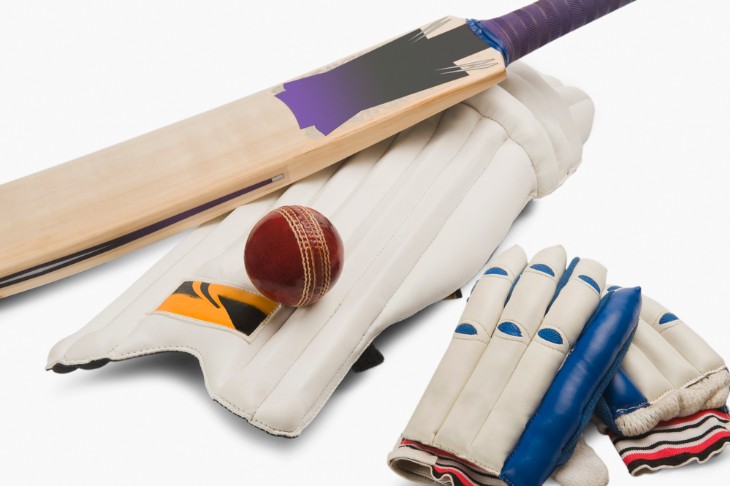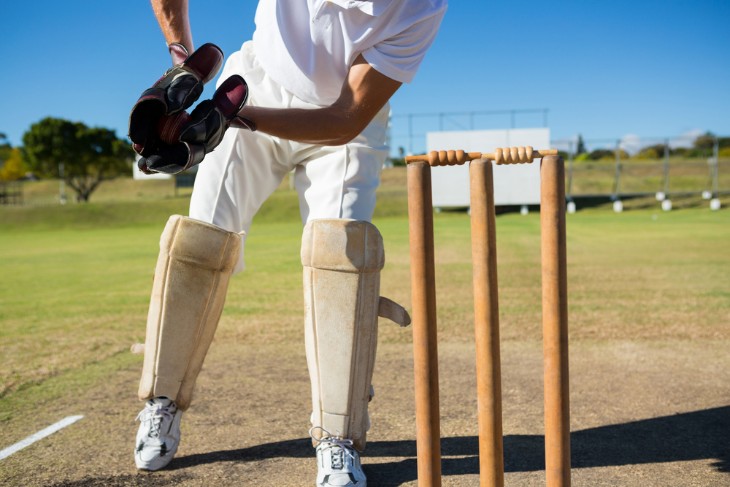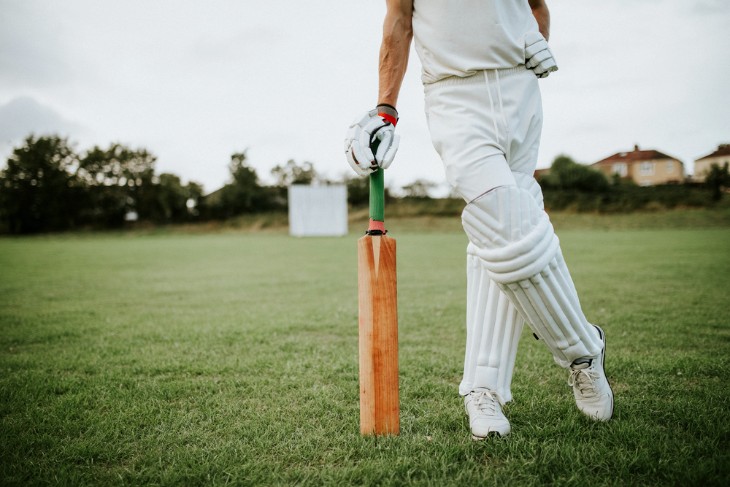- Regular Maintenance of Cricket Pads
- Step-by-Step Guide to Surface Cleaning
- Deep Cleaning Techniques for Cricket Pads
- Choosing the Right Cleaning Agents
- Addressing Common Stains on Cricket Pads
- Drying and Storage Practices for Longevity
- Preventive Measures to Keep Cricket Pads Clean
- The Role of Professional Cleaning Services
- Tips for Eco-Friendly Cleaning Solutions
- Conclusion
Cricket pads are designed to offer protection and comfort during the game. These pads are typically made from a combination of materials, each chosen for its specific properties. The outer part of the pad, which faces the oncoming ball, is usually constructed from high-impact resistant materials like PVC or polyurethane. This layer is crucial for absorbing the shock from the ball. Beneath this, foam padding or a similar cushioning material provides additional protection and comfort to the player's legs. The inner lining, which is in contact with the player's skin, is often made from soft, breathable fabrics to ensure comfort during long periods of play.
The structure of cricket pads also plays a key role in their functionality. They are designed to cover the lower part of the legs, particularly the shins and knees, which are most susceptible to injury. Modern pads include articulated joints, especially around the knee area, to allow for greater flexibility and movement. Understanding the materials and structure of cricket pads is crucial for effective cleaning and maintenance, as different materials require different care methods.
Regular Maintenance of Cricket Pads
Regular maintenance of cricket pads is vital to prolong their lifespan and ensure maximum protection during play. Regular maintenance involves both cleaning and physical inspection of the pads. It's important to check for any signs of wear and tear, such as cracks in the outer layer or a breakdown in the stitching. Such damages can compromise the protective quality of the pads and should be addressed promptly.
Cleaning cricket pads regularly is equally important. After each use, wiping down the pads with a damp cloth helps remove dirt and sweat, preventing the build-up of grime. This basic step is crucial in maintaining the hygiene and appearance of the pads. Furthermore, airing out the pads after each use is essential to prevent the accumulation of moisture, which can lead to the growth of mould and unpleasant odours. Proper storage, in a cool and dry place, also plays a significant role in maintaining the quality of cricket pads over time.
Step-by-Step Guide to Surface Cleaning
Surface cleaning is a fundamental aspect of how to clean cricket pads. This process involves a series of steps aimed at removing surface dirt and grime without damaging the pads' material. Initially, start by gently brushing off any loose dirt using a soft-bristled brush. This is especially important for areas like the straps and edges where dirt accumulates. After brushing, use a damp cloth to wipe down the entire surface of the pad. It's advisable to use lukewarm water as it helps to loosen dirt more effectively than cold water.
For more effective cleaning, follow these steps:
- Mix a mild detergent with water in a bowl.
- Dip a soft cloth into the solution and wring it out to avoid excessive moisture.
- Gently wipe the pads with the damp cloth, paying extra attention to stained areas.
- Use a separate clean, damp cloth to wipe off any soap residue.
- Allow the pads to air dry completely before storing them.

Deep Cleaning Techniques for Cricket Pads
Deep cleaning cricket pads is necessary to remove ingrained dirt and eliminate odours. This process requires more attention and care to ensure that the materials of the pads are not damaged. Start by preparing a cleaning solution of mild detergent and warm water. Submerge a soft cloth or sponge in the solution and gently scrub the pads. Focus on areas that are heavily soiled or have stubborn stains. For tougher stains, you might need to use a specialised sports gear cleaner, but always ensure it's suitable for the materials of your pads.
To deep clean your cricket pads, consider these points:
- Test any cleaner on a small, inconspicuous area of the pad first to ensure it doesn't cause discolouration or damage.
- Use a soft brush for stubborn stains, but be gentle to avoid damaging the material.
- After cleaning, rinse the pads thoroughly with a damp cloth to remove any soap residue.
- Never use harsh chemicals or bleach, as they can degrade the materials of the pads.
- Allow the pads to dry naturally in a well-ventilated area, away from direct sunlight.
Choosing the Right Cleaning Agents
Selecting the appropriate cleaning agents is a critical component of how to clean cricket pads effectively while preserving their material integrity. It's crucial to avoid harsh chemicals that can damage the pads' fabric, stitching, or protective layers. Ideally, a mild detergent or a specialised sports gear cleaner is recommended. These cleaners are formulated to be gentle on the materials while being effective at removing dirt and odours. Always read the instructions on the cleaning agent to ensure it's suitable for the materials of your cricket pads.
When choosing cleaning agents, consider the following:
- Opt for pH-neutral detergents, as they are less likely to cause damage.
- Avoid bleach or abrasive cleaners, as they can deteriorate the materials and fade colours.
- Consider environmentally friendly options, like biodegradable detergents, to reduce environmental impact.
- If in doubt, consult the manufacturer's guidelines for recommended cleaning products.
Addressing Common Stains on Cricket Pads
Tackling specific stains is an essential aspect of maintaining cricket pads. Grass, mud, and sweat are common culprits that can leave noticeable marks. For grass stains, pre-treat the area with a stain remover or a mixture of detergent and water before the regular cleaning process. Mud stains should be allowed to dry first before being brushed off; then, the area can be cleaned with a damp cloth dipped in soapy water.
To effectively address common stains, keep in mind:
- Sweat stains may require a gentle scrub with a soft brush and soapy water.
- For oil or grease stains, using a small amount of dishwashing liquid can be effective.
- Always test the cleaning solution on a small, inconspicuous area first to ensure it doesn’t damage the pad’s material.
- Rinse the area thoroughly after treating the stain to remove any residue of the cleaning agent.
Drying and Storage Practices for Longevity
After how to clean cricket pads, drying and storing them correctly is vital to ensure their longevity. It's crucial never to dry cricket pads in direct sunlight or with a direct heat source like a hairdryer, as this can cause the materials to deteriorate or warp. The ideal way to dry them is in a well-ventilated area, ensuring that they are completely dry before storage. This prevents the growth of mould and mildew, which can damage the pads and produce unpleasant odours.
For effective drying and storage, follow these guidelines:
- Hang the pads in an airy, shaded place to allow for even drying.
- Ensure they are fully dry, inside and out, before storing them.
- Store the pads in a cool, dry place away from direct sunlight.
- Avoid folding or stacking heavy items on the pads, as this can deform their shape.
Preventive Measures to Keep Cricket Pads Clean
Preventative maintenance is as important as knowing how to clean cricket pads. Regularly inspecting and cleaning the pads after each use helps prevent the build-up of dirt and reduces the need for deep cleaning. Using pad covers during play can also protect them from direct exposure to dirt and grime. It’s advisable to adopt a routine maintenance schedule, ensuring that the pads are always in the best condition for use.
To keep your cricket pads clean, consider the following preventive measures:
- Wipe the pads with a damp cloth after every use to remove surface dirt.
- Occasionally air out the pads to prevent odour buildup.
- Use pad covers during play to protect against direct dirt and moisture.
- Regularly check for any tears or damage that could allow dirt to penetrate deeper into the pad.

The Role of Professional Cleaning Services
Sometimes, the task of how to clean cricket pads can be best left to professional cleaning services, especially when dealing with stubborn stains or when a thorough deep clean is required. Professional cleaners have access to specialised equipment and cleaning agents that may not be readily available to the average consumer. They also possess the expertise to handle different materials without causing damage. Using a professional service can be particularly beneficial for high-end cricket pads where maintaining material integrity is crucial.
When considering professional cleaning services, keep in mind:
- Research and choose a service that specialises in sports equipment.
- Check reviews or ask for recommendations from fellow cricketers.
- Understand the cleaning process they use and ensure it aligns with the care requirements of your pads.
- Compare costs and consider the value of preserving your pads' condition against the expense of professional cleaning.
Tips for Eco-Friendly Cleaning Solutions
In the context of how to clean cricket pads, using eco-friendly cleaning solutions is not only beneficial for the environment but can also be gentle on the pads. Simple household items like baking soda and vinegar can be effective for removing odours and light stains. Using biodegradable detergents or those free from harsh chemicals reduces the environmental impact and is also less likely to cause damage to the pads.
For eco-friendly cleaning, consider the following:
- Mix a solution of equal parts water and vinegar for a natural cleaning agent.
- Use baking soda to absorb odours; just sprinkle it on the pads, leave for a few hours, and then brush off.
- Look for eco-friendly commercial cleaners that are less harsh on both the environment and cricket pad materials.
- Always rinse the pads thoroughly after using any cleaning agents to remove any residue.
Conclusion
In summary, effective maintenance and cleaning of cricket pads are essential not only for the appearance and hygiene of the gear but also for ensuring maximum protection and longevity. How to clean cricket pads involves a series of steps, from choosing the right cleaning agents and addressing common stains, to proper drying and storage practices. Additionally, preventive measures and considering professional cleaning services can further contribute to the upkeep of cricket pads. By adhering to these guidelines, cricketers can ensure their pads remain in top condition, providing safety and comfort during the game.


